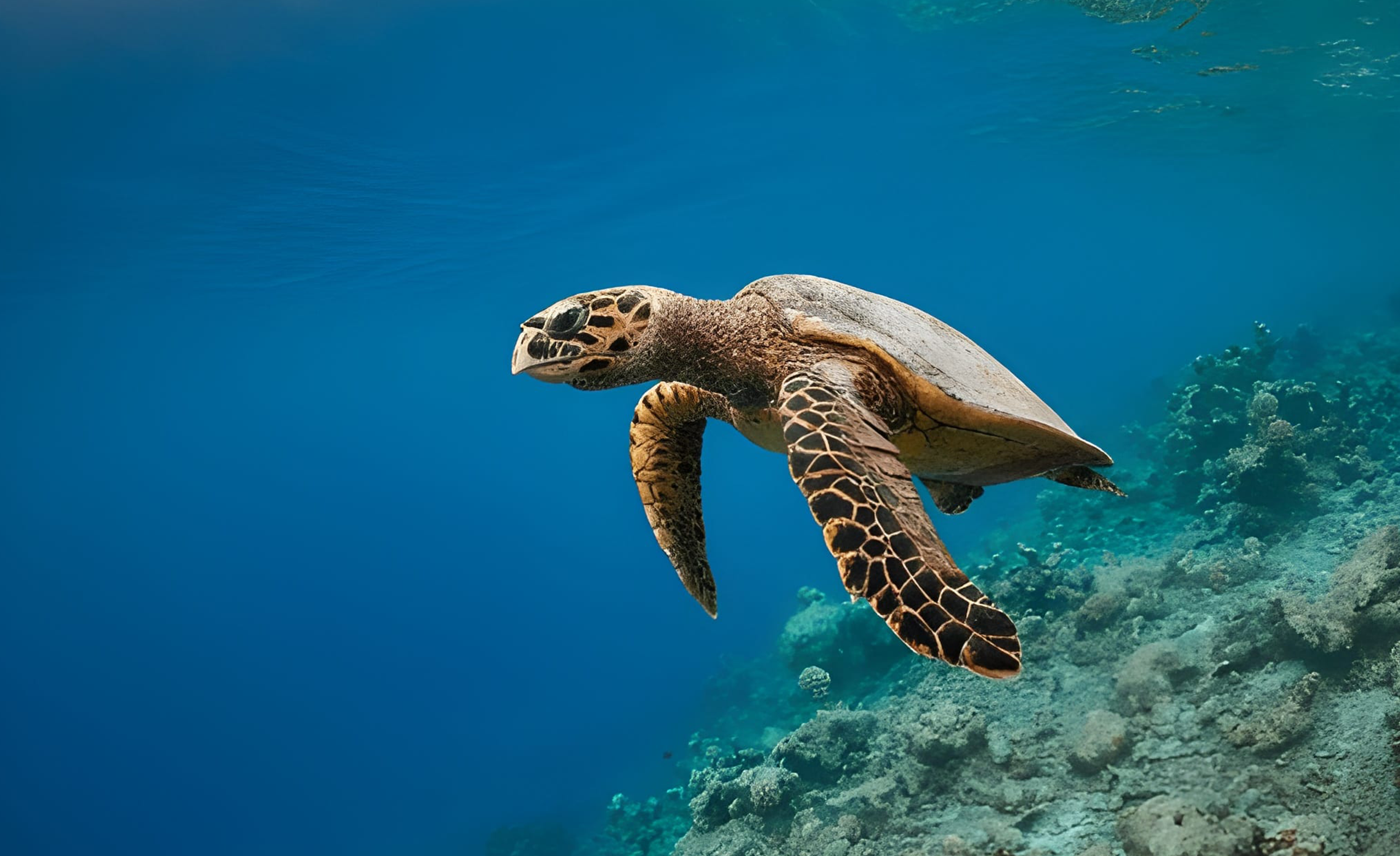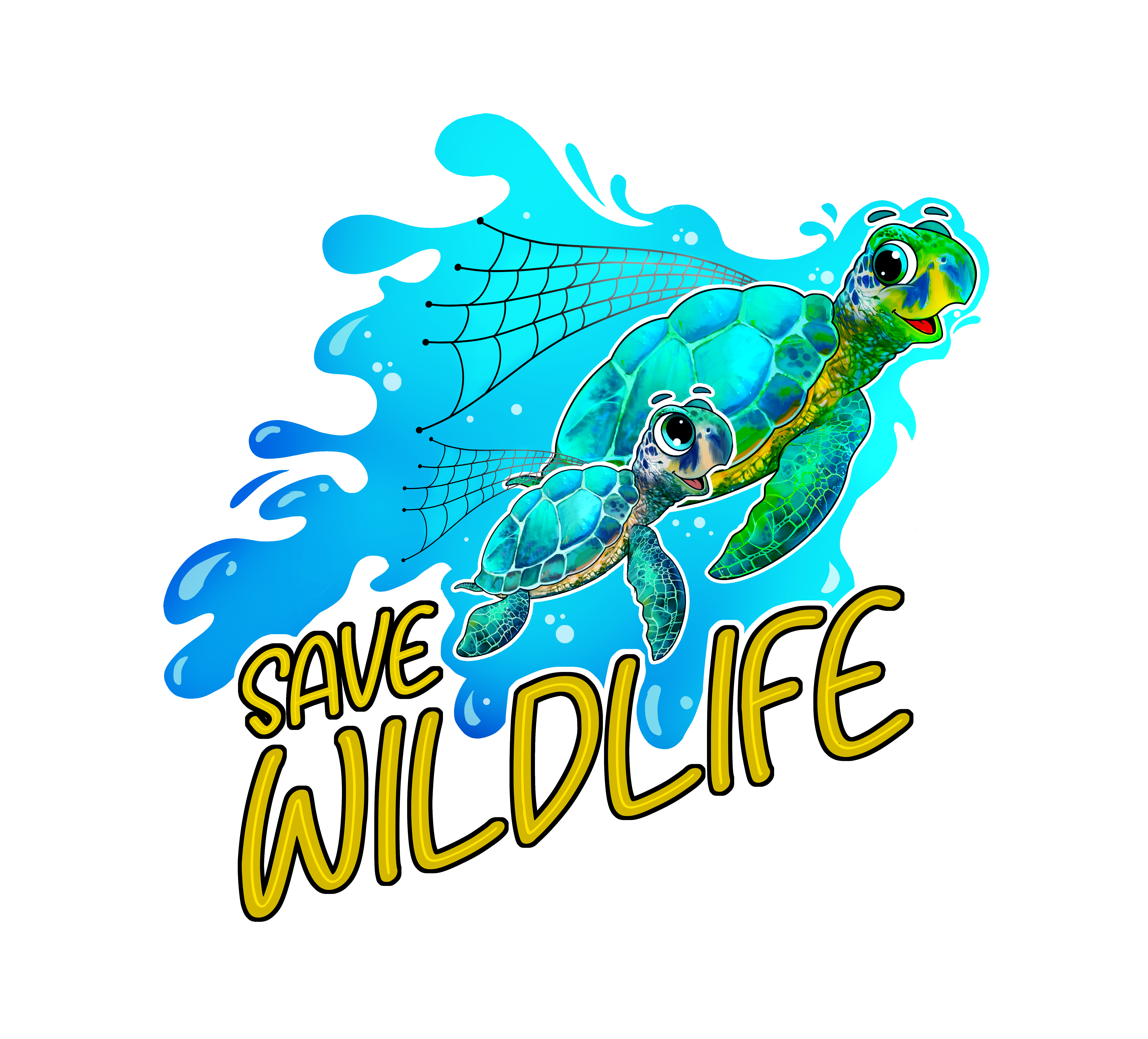
Save Marine Life Today: The Critical Fight to Preserve Hawksbill Sea Turtles
Save marine wildlife is more than just a call to action; it’s critical for the health of the planet’s oceans and the creatures that call them home. And the Hawksbill Sea Turtle is among the most important species for marine ecosystems. Unfortunately, it is also now considered a critically endangered species as a result of human activity, climate change, and pollution, to name a few. Understanding what Hawksbill Sea Turtles are up against is imperative to save endangered animals and make wildlife conservation a top priority everywhere.
Table of Contents
Understanding the Hawksbill Sea Turtle
Recognizable by its distinctive patterned shell and sharp, curved beak, the Hawksbill Sea Turtle is typically found in tropical coral reefs of the Atlantic, Pacific, and Indian oceans. Hawksbill Sea Turtles are essential to sustaining healthy marine ecosystems. They mainly feed on sponges, which in turn limits sponge populations that can take over coral reefs and harm ocean wildlife conservation and the species balance of marine ecosystems.
Although Hawksbill Sea Turtles can live for 30–50 years, their populations are declining at an unprecedented rate. Hawksbills are not merely beautiful animals but an endangered species and an indicator of ocean health, so while not taking a specific protection step for Hawksbill Sea Turtle, you make a step forward in our overall global goal to save marine life.
Threats Facing Hawksbill Sea Turtles
The Hawksbill Sea Turtle exemplifies the reasons to take swift action to save endangered animals. The major threats include:
- Illegal Poaching: The shells of Hawksbill turtles have long been made into jewellery and ornaments. This illegal trade continues, despite bans and legislation in place to halt it, and has profoundly decreased the population of Hawksbills worldwide.
- Habitat Loss: Coral reefs are the primary habitat for Hawksbill Sea Turtles, and coral reefs are threatened by climate change, pollution, and destructive fishing practices.
- Bycatch: Many turtles are accidentally caught in fishing nets, which is a significant reason turtles continue to decline.
- Pollution: Plastic waste, oil spills, and other substances in the ocean continue to injure or kill turtles and make it especially difficult for hatchlings to survive.
Targeting these threats is at the core of wildlife conservation to protect this endangered species and to make sure we continue to save marine life for generations to come.
The Ecological Role of Hawksbill Sea Turtles
Hawksbill Sea Turtles play an important role in the health of coral reefs. They graze on sponges and other invertebrates to keep these species from taking over corals. Healthy reefs provide habitat for many marine animals and protect coastal communities from storms and erosion. Saving Hawksbill Sea Turtles is not just about saving an endangered animal; it is to save marine life on a more expansive scale.
In addition, Hawksbill Sea Turtles aid fisheries and other human endeavours dependent on thriving oceans by promoting the health of reefs. This idea is why wildlife conservation programs prioritize the protection of endangered species. Every Hawksbill Sea Turtle that is saved reminds us and contributes to a healthier and more stable ocean.

Global Conservation Efforts
Across the world, organizations are actively working to protect marine wildlife and Hawksbill Sea Turtles through several initiatives:
- CITES (Convention on International Trade in Endangered Species): Bans the trade of Hawksbill shells and materials derived from them.
- Marine Protected Areas (MPAs): Protect coral reef habitats and nesting beaches used by turtles.
- Community-Based Programs: Empower communities to monitor and protect their nesting areas.
- Research Projects: Track turtle behaviours such as migration, nesting, and health in order to develop better conservation techniques.
These initiatives help to conserve Hawksbill Sea Turtles and join together as part of an effort to protect wildlife and save endangered animals worldwide.
How Can You Help Save Marine Life?
Actions do not need to be large to be valuable. Here are some steps you can take to make a difference:
- Reduce plastic use: Use fewer single-use plastics to help eliminate accidental ingestion in turtles and other sea animals.
- Support a conservation organization: Volunteer or donate to any organization that helps with wildlife conservation and the protection marine environment.
- Raise awareness: Teach your community about Hawksbill Sea Turtles and other endangered species.
- Eat sustainable seafood: Choose seafood that has been sustainably harvested and protects turtles from bycatch.
- Participate in a beach clean-up: When you remove litter from the beach, you protect and create nesting sites and marine habitat.
When we spend our time doing any of these activities, we contribute with our action to the ongoing efforts to save endangered animals and save marine life worldwide.
The Role of Education in Saving Marine Life
Education can be an effective mechanism for doing our part to save marine life. Educating individuals on the importance of Hawksbill Sea Turtles and other at-risk species will foster long-term changes in behaviour (especially among population groups that live along coastal regions). Schools, local organizations, and social campaigns can observe that even small decisions—such as which kinds of options to support that utilize less plastic, or support wildlife conservation—can influence the health of the ocean. Educational campaigns will help to mitigate or reduce the risks, such as poaching or habitat loss, while inspiring people to get involved in local or national efforts to save endangered animals. When communities recognize the relationship between their daily behaviours and the marine ecosystem, it is much more likely that we will be able to protect Hawksbill Sea Turtles and other at-risk species.
Last Words of Encouragement
Hawksbill Sea Turtles symbolize the fragile balance of life within oceans, but they are not just lovely animals. Every step we take to save marine life matters. By joining the fight for conservation, pollution prevention, and awareness-raising, we contribute to the protection of endangered species, support wildlife conservation, and give the gift of a vibrant ocean ecosystem to future generations. Protecting Hawksbill Sea Turtles is part of a larger vision to save endangered animals and protect wildlife everywhere. Your action today can create a ripple effect and leave a lasting impact.
FAQ Section
1. Why is it necessary to save marine life like Hawksbill Sea Turtles?
Hawksbill Sea Turtles have an important role in the health of coral reefs, which supports biodiversity, fisheries, and shoreline protection. Large populations of Hawksbill Sea Turtles can create a thriving ocean ecosystem that we all can benefit from.
2. Why are Hawksbill Sea Turtles considered an endangered species?
Hawksbill Sea Turtle populations have declined critically due to illegal poaching for their shells, habitat loss/destruction, bycatch (accidental capture in fishing gear), and pollution, making them one of the most endangered animals found in the ocean.
3. What benefits do wildlife conservation efforts provide for marine ecosystems?
Wildlife conservation programs serve to protect nesting beaches, reduce poaching, and promote balance in the marine habitat so animals like Hawksbill Sea turtles can survive.
4. What are the biggest threats to Hawksbill Sea Turtles today?
The biggest threats come in the forms of illegal trade of Hawksbill turtle shells, habitat loss and destruction, bycatch while fishing, and pollution in the ocean. Finding solutions to effectively address these issues is the key to saving marine life.
5. How can individuals help save endangered animals like Hawksbill Sea Turtles?
Individuals can help reduce their use of plastics, support organizations working to save marine life, volunteer to clean up litter, choose sustainably harvested seafood, and spread awareness to help save wildlife.
